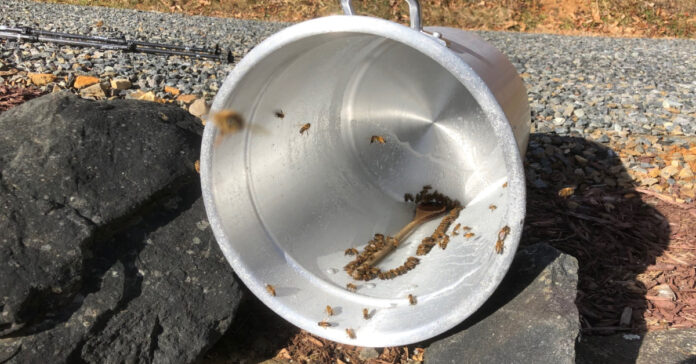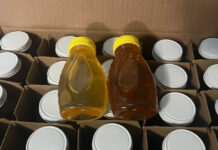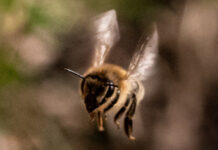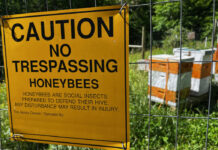Yesterday was another one of those days when we took advantage of an unseasonably warm day to do some chores around the homestead.
After tending the animals, I whipped up another batch of winter feed for the bees. Then I left the 32-quart pot I use to heat and stir the 2-to-1 sugar/water mixture out for the bees to clean up. As you can see above, they loved it and lined up at the edge of the sugar water to suck it up.
There are plenty of bees still in the hives, which is a good thing. The bees form a big mass in the center of the hive to keep the queen and any brood warm during the cold months. The more bees, the warmer they will be.
Friends of mine at lower altitudes say the warm weather has caused some spring flowers to bloom. That is not the case on our mountain. I would not mind some weeds greening up as the chickens would love to eat dandelions, plantains and other weeds. I think they are bored because there’s not much green and few insects to catch.
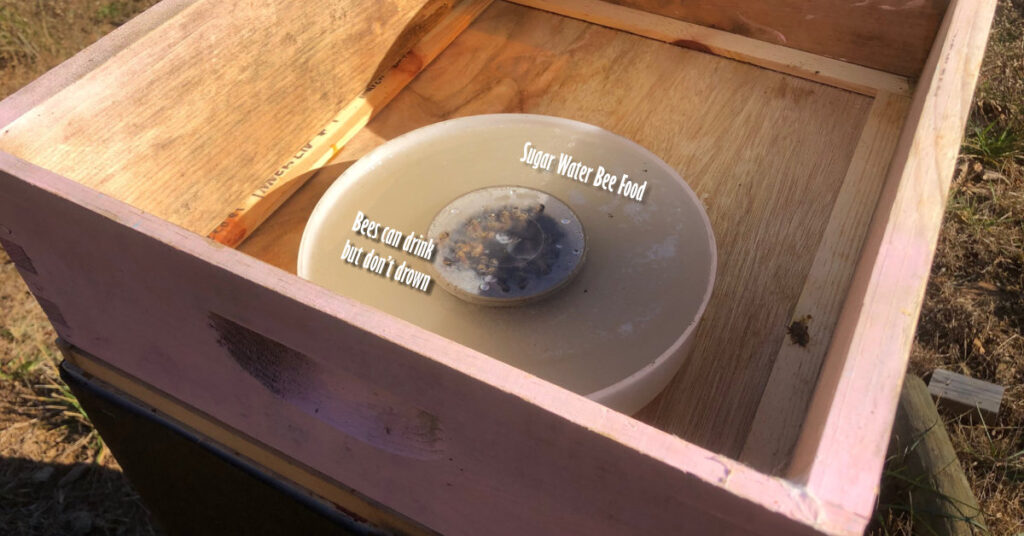
Mountain Living
Our biggest project was hiking up the mountain and doing maintenance on the spring-fed water system. This entailed inspecting for leaks (none found) and eliminating any flat spots where the water might slow down or accumulate in the black poly pipe and freeze. We fixed one that I had noted on my last trip up the mountain. I also checked out the septic field and all looked well. No wet spots or obvious issues. We’ve had such dry weather I felt this was the perfect time to check.
Then it was on to bringing in firewood, a chore we face two or three times a week. Still, it’s easier to do in nice weather than in a storm. I have kept the fire burning low all day, but I still removed some ashes and dumped them outside.
In the afternoon, we worked on the materials we have put in our raised beds, which are almost like compost bins. There’s chicken bedding, dried leaves, green material, and other compostables in there. We added more green material, stirred it in, and watered it down to facilitate composting. We will be adding compost a dirt on top of this material to form the growing medium. Hopefully, the composting materials below and the rotting wood below that will keep our plants fed for years to come.
I finished the day with some carpentry.
Our Microclimate
We are very much in a microclimate of our own. Because we get bright morning sun, we warm up early. There are days when I can leave the house with temps in the mid 40s and when I get into the valley, which is shaded by the mountain, there is still frost on the ground.
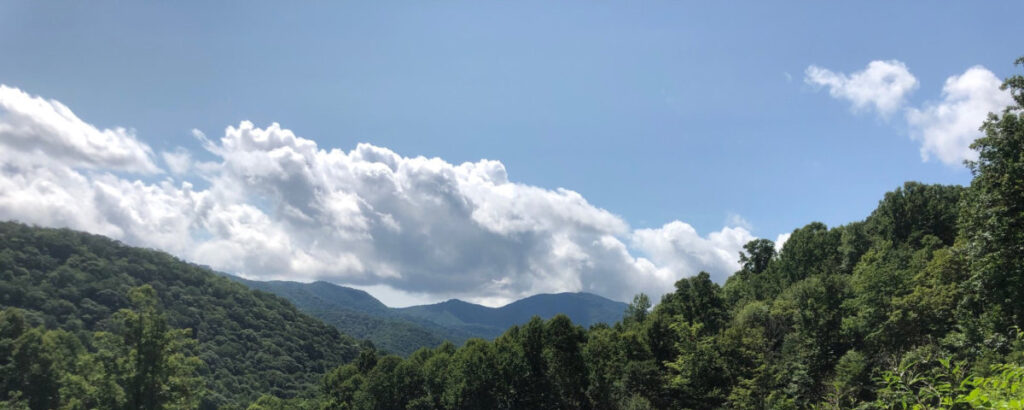
The microclimate makes getting accurate weather forecasts difficult. Usually our altitude makes us a few degrees colder than it is in the village, but that varies by the time of day and whether it is sunny or cloudy. Then there is the wind. There are times we can hear the wind blowing above us as it comes over the mountain but the mountain keeps it from reaching us. We get winds blowing up the valley, which can be quite fierce, and down the valley, but rarely across it. Still, it blows enough that if we had a windmill I expect it would generate quite a bit of power.
The longer we are here, the more we learn and the better we can predict our weather patterns and whether there will be fog, rain or snow.

